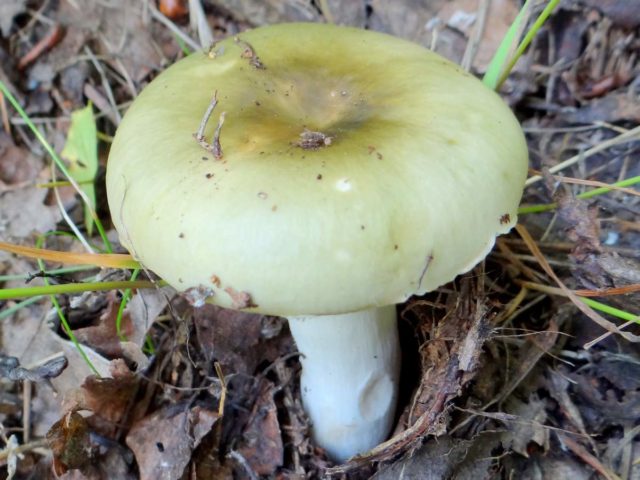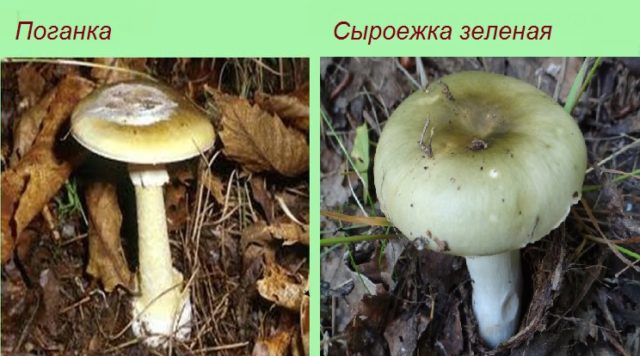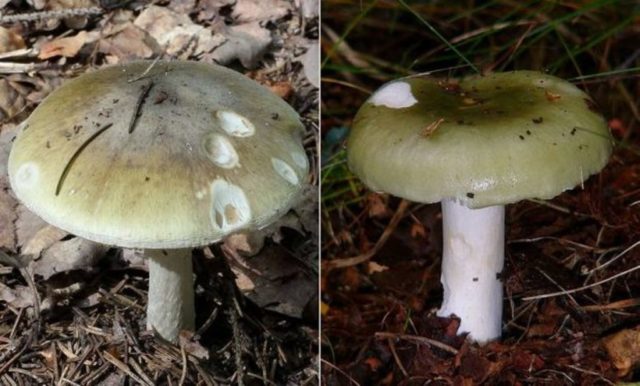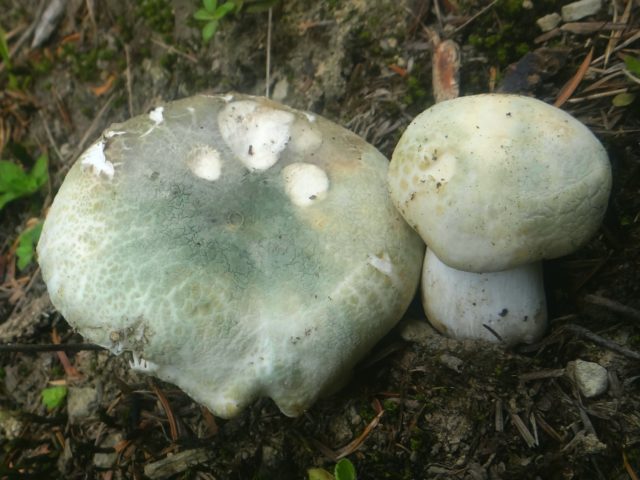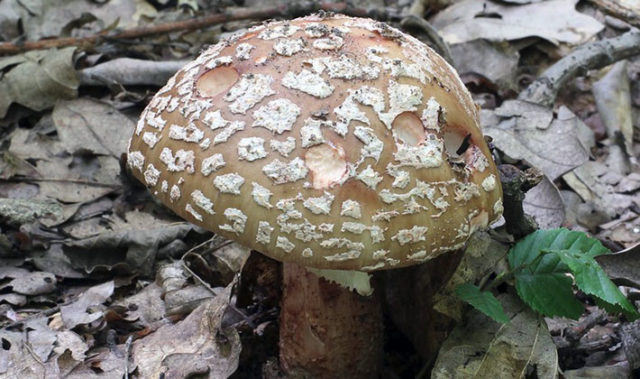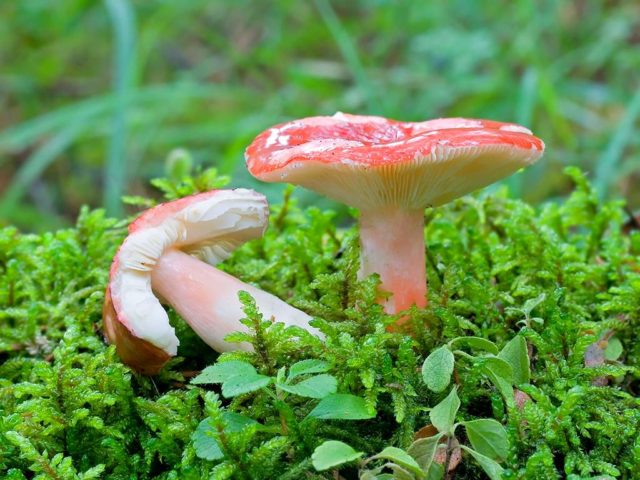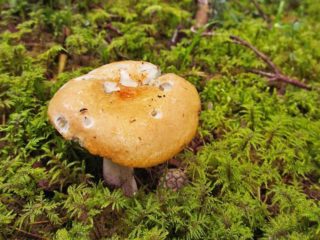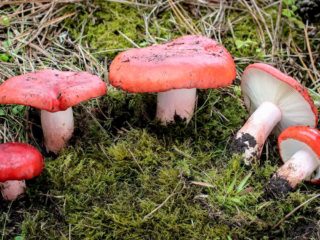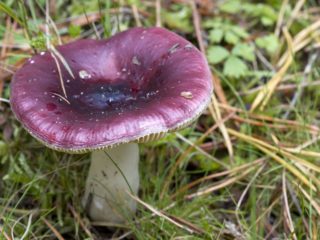Content
In almost every forest there is a green russula. It belongs to the genus of lamellar mushrooms of the family of the same name. Connoisseurs and connoisseurs of forest gifts will never pass by her. But beginners sometimes confuse it with poisonous counterparts or do not know how to cook. As a result, inexperienced mushroom pickers lose part of their forest production.
Where green russula mushrooms grow
This is one of the most unpretentious representatives of his kingdom. The green forest beauty is completely undemanding to the composition of the soil and climatic conditions, therefore it is found everywhere. It usually grows in mixed forests, deciduous forest belts - most often singly or in small groups.
At first glance, the mushroom is unpresentable, the greenish tint of the cap evokes an association with toadstools. But seasoned gatherers know that green russules are delicious and healthy when cooked properly. And their low calorie content makes them valuable for lovers of a healthy lifestyle.
What green russula look like
It is important to study the photo and description of the green russula before heading into the forest. This will allow:
- Do not pass by the edible green inhabitants of the forest floor: beginners often leave those specimens for which they cannot find an exact definition;
- Do not put a poisonous specimen in the basket.
These organisms form a symbiosis with tree roots. Therefore, you need to look for them near birches, less often - conifers. The mushroom has a tubular structure and is colored green or white. As it ages, it turns gray. The caps are usually small, from 5 to 10 cm, but under favorable conditions, real giants grow, up to 20 cm. Young green russula have a beautiful, even cap, reminiscent of an umbrella.
- The hats are covered with mucus, which becomes shiny when dry.
- The height of the leg reaches 7 cm, and the diameter is up to 3 cm. On the cut, the leg is dense, without cavities, smooth. In severe drought, brown spots appear on it.
- The pulp is white with a pleasant smell. When pressed, it turns brown.
Green russula edible mushroom or not
The characteristic shade of the cap gives it a clear resemblance to a toadstool. Despite this, the mushroom belongs to the edible species of russula. It has a pleasant taste without bitterness. Of course, it cannot be compared with white or boletus, which is why it is referred to the 4th category.
Of the entire russula family, green ones are considered the safest to eat. They can be fried and stewed, salted and pickled.
Mushroom taste
Returning from the forest, I want to quickly clean the green prey and start cooking.Cooking a green russula takes a little more time and aging than other members of the species. The green variety is considered the tastiest, but the characteristic pungency, if improperly cooked, can ruin the dish. The solution to this problem is simple. Mushrooms are soaked for 24 hours or boiled for 15 - 20 minutes. You can combine both methods.
Russula is a dietary product, the calorie content of fruit bodies is 19 kcal per 100 g. The rich protein composition makes it useful for athletes and people engaged in physical labor.
Benefits and harm to the body
When collecting forest gifts, you need to know exactly how their use will affect your condition and well-being. If a mushroom dish is being prepared for the first time, then you should not offer it to children and the elderly.
And this, despite the fact that the russula, due to its multicomponent composition and beneficial properties, helps the body to cope with daily stress:
- It is a natural antibiotic that inhibits the development of pathological microflora and the growth of bacteria.
- The vitamins contained in the composition are needed for the functioning of all organs.
- Low in calories and high in protein will help people fight overweight.
- Exceptional nutritional value makes russula the equivalent of chicken breast for athletes. It quickly saturates the body and does not cause heaviness in the stomach.
- Green russula contains substances that reduce the risk of blood clots.
Possible contraindications
Despite the fact that it is an edible mushroom, some categories of people should be careful with its use or exclude it from food altogether. This applies to cases:
- Individual intolerance;
- Serious liver, kidney and heart disease;
- Pregnancy and lactation. This is especially important for women with sensitive digestion;
- Children under 7 years of age. Pediatricians limit the use of mushrooms to children under 2 years of age, but even after that, you need to be careful.
Poisonous double russula green
The biggest danger when going mushrooming is to bring a dangerous specimen in the basket that can damage your health. Therefore, it is important to study the mushroom map of the region of residence. As for the green russula, it has no poisonous counterparts, that is, there are no varieties similar to it like two drops of water.
But in practice, it happens that this mushroom is confused with a pale toadstool or fly agaric. It should be noted that this similarity is very conditional. You just need to understand a little in order to avoid mistakes. Signs of difference:
- The edible mushroom does not have a volva ring, and it also has a pleasant aroma.
- In a young russula, the leg is poorly visible, which enhances the resemblance to a toadstool. Therefore, you need to dig in the soil a little: a toadstool grows from an egg - a Volvo, and two rings are visible on the leg.
- The pungent smell gives off a poisonous toadstool.
The second "poisonous green russula" is the fly agaric. The scaled variety is confused with it, despite the absence of the characteristic cap and white spots. But in the russula, the scales adhere to the cap tightly, and in the fly agaric they easily peel off.
Green russula in the photo:
Amanita:
Poisonous russula
In shape, these mushroom specimens are similar to the edible green variety, but at the same time they have a remarkable, bright color that gives them away.
There are species that are not poisonous, as they do not contain toxins. However, they can cause indigestion and upset stomach. These russula include:
- Birch... Her hat can be pink, purple, red. It grows in damp places, near birches. Due to its bitter taste, it is not used for food.
- Corrosive... Differs in purple color, pronounced mushroom aroma, bitter taste. It is permissible to eat it, but the quality of the dish will be low. For medicinal purposes, this variety is also not used.
- Blood red... Her hat seems to warn against picking such a mushroom. Has a pungent taste.
- Spicy... The hat can have different shades, from lilac to purple. Due to the causticity in cooking, this type is not used, since even when soaked and boiled, an unpleasant smell remains.
Collection rules
Mushroom pickers are condescending to this family and if there is other prey, then they leave the green variety to the less fortunate followers. Green russula, unlike other members of the family, almost do not crumble during the collection process and perfectly tolerate transportation. They have a dense structure, which is a feature of this species.
How to cook green russula
The mushrooms brought home need to be sorted out and rinsed well.
- A prerequisite is soaking, preferably for 3 to 5 hours;
- The field is boiled for 15 minutes, which will help remove the bitterness.
After that, you can proceed to cooking. The russula is not suitable for frying and soups, but for blanks it is better not to come up with it. The dense pulp of the mushroom perfectly tolerates soaking and does not fall apart after boiling. Salting green russula is an art that will be useful for a hostess to master. There are two techniques, each of which is successful in its own way:
- Cold salting... This method does not involve boiling. To prepare the marinade, take 100 g of salt per liter of water and pour the mushrooms with this solution. To remove the bitterness, the first three days the water is changed every day. After 1.5 months, you can try.
- Hot way... Allows you to make the pulp of the mushroom firm. The salt concentration in the brine is the same as in the first recipe. Boil russula and add spices: garlic, pepper. Readiness is easily determined when the mushroom mass settles to the bottom.
Conclusion
Despite the fact that the green russula is not a standard in taste, it can still be successfully used in cooking. With a certain skill, the hostesses prepare soups, casseroles from it, add to various sauces. And even if the aroma of russula cannot be compared with the porcini mushroom, it is still a valuable food product, a source of protein, without unnecessary calories.
Beginning mushroom pickers can be advised to carefully study the information before going into the forest. Distinguishing russula from toadstool is not difficult, as well as from its less edible counterparts. And if conditionally inedible mushrooms got into the basket, then boiling will avoid digestive problems.
